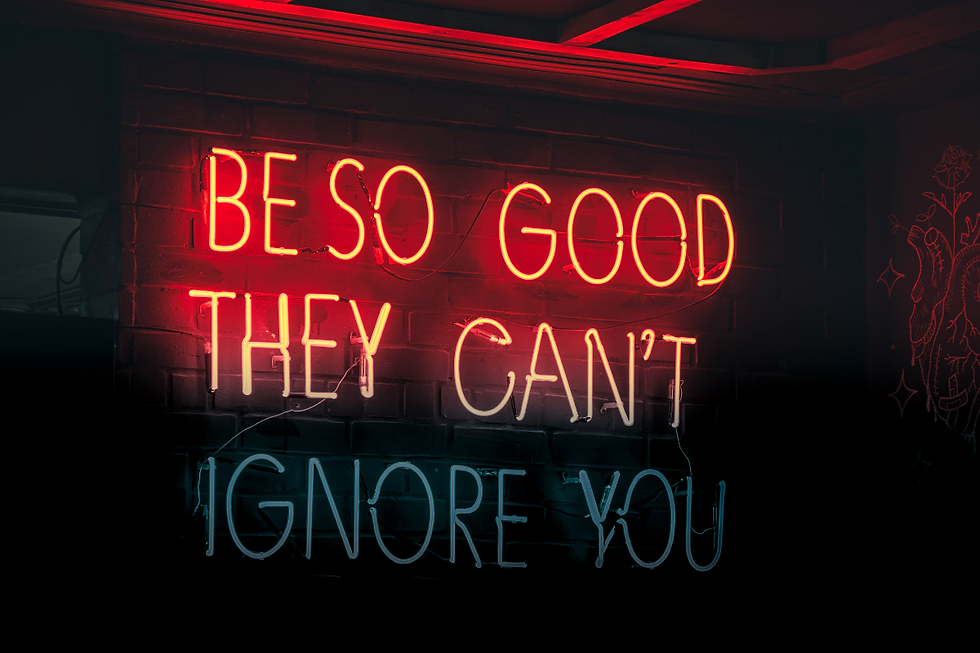The future of bricks and mortar retail? A brand centric customer driven experience.
- Juanita Neville-Te Rito

- May 26, 2014
- 4 min read

So says this week’s guest blogger, Lisa Douglas.
While the Retail Geek is winging her way over the globe checking out the latest retail trends, uncovering winning brand strategies and new retail innovations, I’m here in Godszone deliberating over the countless ways to write (vs. experience) an ‘interesting and informative retail blog’. I know where I’d rather be!
Best to stick with what I’m passionate about – creating and delivering a customer centric shopping experience.
In the era of online retail the bricks and mortar experience must evolve to remain relevant. Global trends already indicate a move to more showroom and customer centric oriented experiences. How do these trends translate into NZ retail with our smaller footprints, and even smaller budgets?
While we are still slightly ahead of the online onslaught, we need to seize the opportunity to work on our future store experiences. Now.
But first things first. Before you can commence design and build of a branded customer centric shopping experience, you have to define the path to purchase and for me it starts with a store layout methodology based on putting the customer first.
The store layout methodology is so much more than placement of product groupings over fixtures and fittings on a floor plan. It defines the path to purchase from the overlay of customer touch points that align to the brand strategy, through delivery of promotional programs to drive sales, all with a focus on profitable Merchandise model. Oh, and it has to be operationally effective.
It takes skill and experience to align brand, marketing and merchandise strategies with best practice operations in a constantly changing retail environment. But they all must, and can work together, with the customer at the core.



New Freedom Furniture store layout at Sydney’s Moore Park SupaCenta - a retail space that is flexible, merchandise focused, and user friendly.
Reference Inside Retail 21st February
It takes sill and experience to align brand, marketing and merchandise strategies with best practice operations in a constantly changing retail environment. But they all must, and can work together, with the customer at the core.
Retail experience needs a logical product layout and traffic flow, cycling customers through each category (ideally in order) and through customer shopping zones.
Clear landing zones, sight lines, with defined hotspots by category help to create points of interest encouraging shoppers to linger and reflect. Showcasing value - not just by price and discounting - remains a critical retail deliverable, and requires planning to fit the merchandise and promotional programs.
The final overlay of the brand’s in-store touch points delivers brand and market differentiation, the experiential touch points that bring the brand to life.


Clearly.com.au
Successful online retailers are now entering bricks and mortar retail. Their bricks and mortar retail is pure experience.
Clearly, a Canadian brand, is the fastest growing online optical retailer in the region.
Clearly, formerly known as Clearly Contacts, has been trading online in Australia for five years, but is making large strides into the the local market with plans for flagship stores in main centres.
Reference Inside Retail
Why is it then that so many of NZ’s larger format retailers don’t do this?
In many cases, retail becomes too operationally driven, rather than customer-experience centric. ‘We’ll stop them stealing that‘ and ‘stack it high watch it fly’ wins out.
When is the last time you went into a Farmers children’s clothing department and were able to comfortably push a pram between the aisles?
How often do racks and bulks stacks feel like they are falling in on top of you?
And when did you last feel compelled to cross the lease line in Briscoe’s because of the engaging window entrance display or unique experiential category offer? More likely you’re heading there to take advantage of the predictable 60% off weekend.
I know and understand the pressures. Honestly I do. I have been emptying stock rooms since I was 18. The footprints are too small for the range planned to drive sales and volume of merchandise being pushed into them.
So racks get taller, the bulks stacks join into one continuous island of stock and aisles shrink in size. The stock holding gets too high and a percentage off sale is born. And so a promotionally driven merchandise cycle is begins….
Unfortunately the pressures mean we tick the box from a ‘get it out on the floor’ perspective, but fail from a customer experience viewpoint.
True, a promotionally and operationally driven store model delivers sales but as we enter the online retail era, traditional retail models will not be enough to entice customers to our bricks and mortar retail sites.
Unless the store layout methodology is redefined the introduction of new merchandise and technology innovations within that store environment will not enhance the shopping experience. Instead it will cause confusion, clutter and make it difficult to shop. Ultimately the brand will lose relevance and suffer.
New brand experiences don’t pop up overnight; they require planning, investment and resource. Unless you are investing now, you could be caught in a zone of irrelevance. Change is coming and it is significant, don’t say you weren’t warned.
Lisa Douglas is Retail Experience Director at Hotfoot, NZ’s premier retail transformation agency. With 24 year’s experience across all levels of Visual Retail, delivery of an engaging retail experience is her forte. Please feel free to contact her on lisa@hotfoot.co.nz




Comments